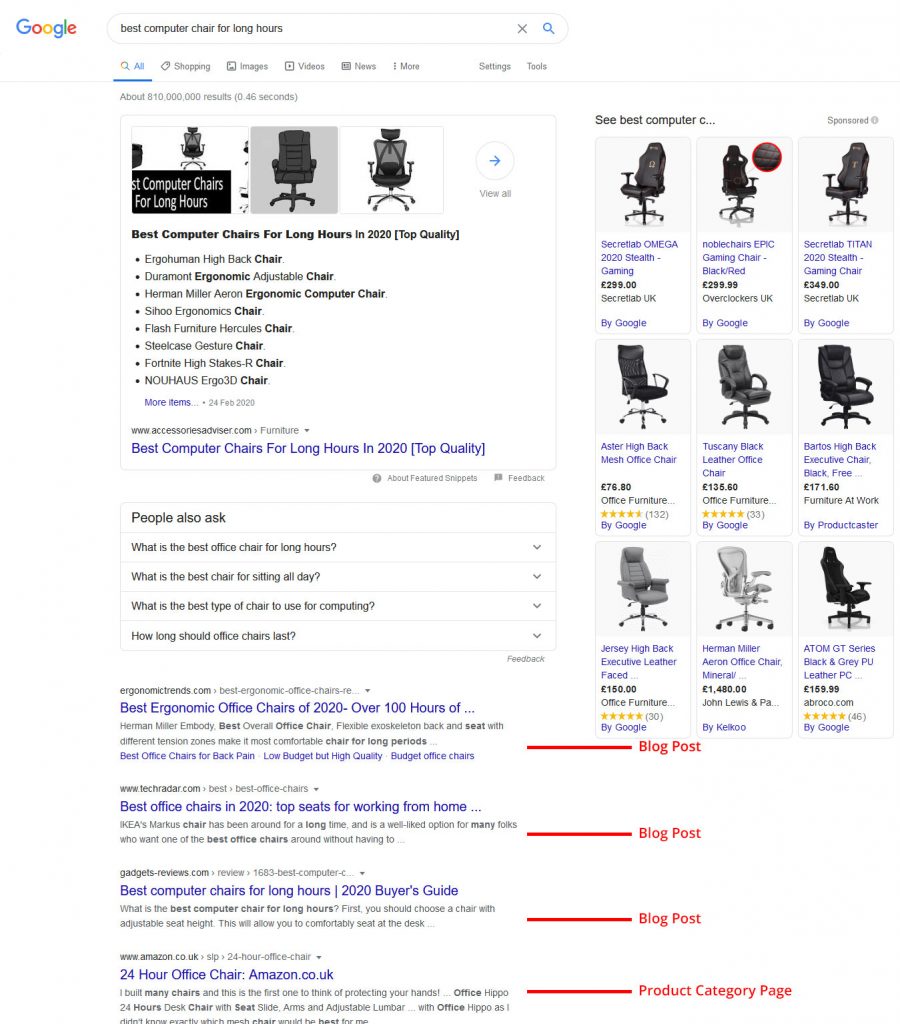
Optimising your on page SEO makes a huge difference to where your web page ranks in Google.
I have increased the organic traffic to a client’s e-commerce category page by over 2000% (yep you read that right…two thousand per cent) through on page SEO alone.
And today I’m going to teach you exactly how.
But before we get stuck in, let’s first clarify what on page SEO is.
What Is On Page SEO?
On Page SEO (also referred to as “On Site SEO”) is the practice of making changes to a web page’s code in order to rank higher for keywords in Google. Any time a SEO professional makes changes to a website with the intention of ranking the page higher in Google – they are performing On Page SEO. This is not to be confused with Off Page SEO, which refers to action taken outside of the web page you’re trying to rank in order to influence Google’s rankings (such as link building)
How To Do On Page SEO
This post is incredibly in-depth, so I have separated it up into the following sections (click the link to scroll down to the part you need help with).
Figure Out The Searcher’s Intent
Although this may not “technically” be considered an on page SEO factor – your page will not rank if it does not meet the searcher’s intent.
To put this simply, you need to know what the person searching for your keyword wants if you want to rank in Google.
The easiest way to figure this out is to see which types of pages are currently ranking in Google for the keyword.
Is Google Showing:
- Product pages?
- Product Category Pages?
- Blog Posts?
- Blog Category Pages?
- Gallery Pages
- Business Directories?
- Services Pages?
- Home Pages?
Search Intent Examples
Here are two very similar keywords that have different intents.
Transactional Keyword
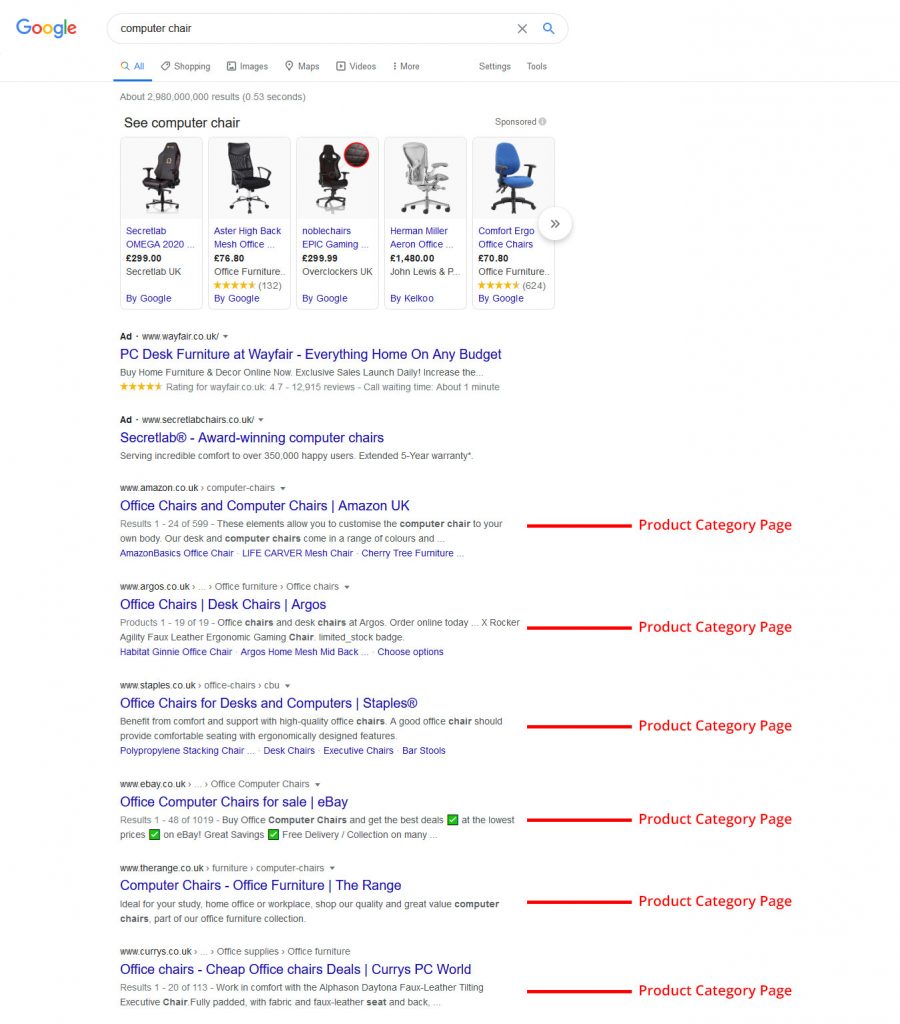
The keyword “computer chair” shows clear commercial intent and so would be considered a transactional keyword (the type of thing people search when wanting to make a purchase). To rank for this keyword, you should target the keyword with a product category page.
Once you know the type of page Google is rewarding, you’ll have a good idea of what you need to create in order to rank.
Meta Title Tag
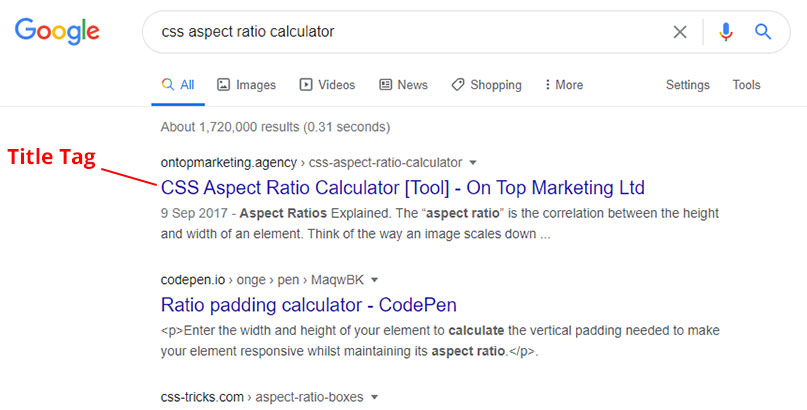
The meta title tag is one of the most important on page SEO factors on your entire webpage. It gives a clear indication to Google what your page is about and is the heading text customers see in the SERP listings.
This needs to be optimised around both keywords and click-through rate if you want a chance of ranking in 2020.
Your best bet is to put your main target keyword at the beginning of your title tag and use keyword modifiers to increase your chances of showing up for additional long tail keywords.
- For transactional keywords, these keyword modifiers include: “buy”, “order”, “purchase”, “free delivery”, “next day delivery”, “on finance”, “cheap”, “deals”, “online” and “sale”.
- For informational keywords these include: “guide”, “review”, “best”, “checklist” and “how to”.
You should also try to include any keyword variations (the other words that mean the same thing) in your title tag too to ensure you show up for as many keywords as possible.
To increase your click through rate try to include a call to action in your title tag, as well as a clear benefit or solution to the problem the searcher is trying to solve.
Your title tag should also be in title case (The First Letter Of Every Word Is Capitalised) to increase its chances of standing out.
Finally, if you’re a well established brand that has a good public perception, adding your company name to the end of your title tag can help increase CTR as people are more likely to trust a company they’ve heard of.
The exact length of your title tag should be between 50 – 60 characters. This is because 90% of title tags kept within this limit will display in full, without being cut off in Google’s results.
Fitting all of the above into the 50 – 60 characters limit is often impossible, and so should be prioritised in this order:
- Keyword
- Keyword modifiers
- Keyword variations
- Call to action
- Company name if established brand, benefit if not.
Using the above example of computer chair, the following title tag would perform well:
<title>Computer Chairs & Office Chairs | Buy Online Now | Company</title>
- The keyword is at the beginning of the title tag
- Using the “&” character in place of the word “and” frees up 2 extra characters
- It includes “office chairs”, which is a variation that gets searched over 34000 times per month (according to ahrefs)
- “Buy” & “Online” are both transactional keywords (meaning they’re more likely to result in a sale)
- “Buy Online Now” is a clear call to action, resulting in a higher CTR
- It includes the company name which can help increase the CTR for well established companies
Meta Descriptions

Many SEO’s argue that there’s no direct correlation between having an optimised meta description and high rankings in Google – which is great news for you, as they are completely wrong!
Instead of thinking about meta descriptions in terms of Google’s algorithm, think about it in terms of click through rates – as that does affect your rankings!
Find The Benefit
To increase your click through rate, always try to include the main benefit the user will find on your page. If you don’t know what that is, one of the fastest ways is to research the most popular search terms surrounding your main keyword.
People are far more open to telling Google what they REALLY want from a product than they are in person, as there is no human being standing opposite them judging them for what they say they want it for.
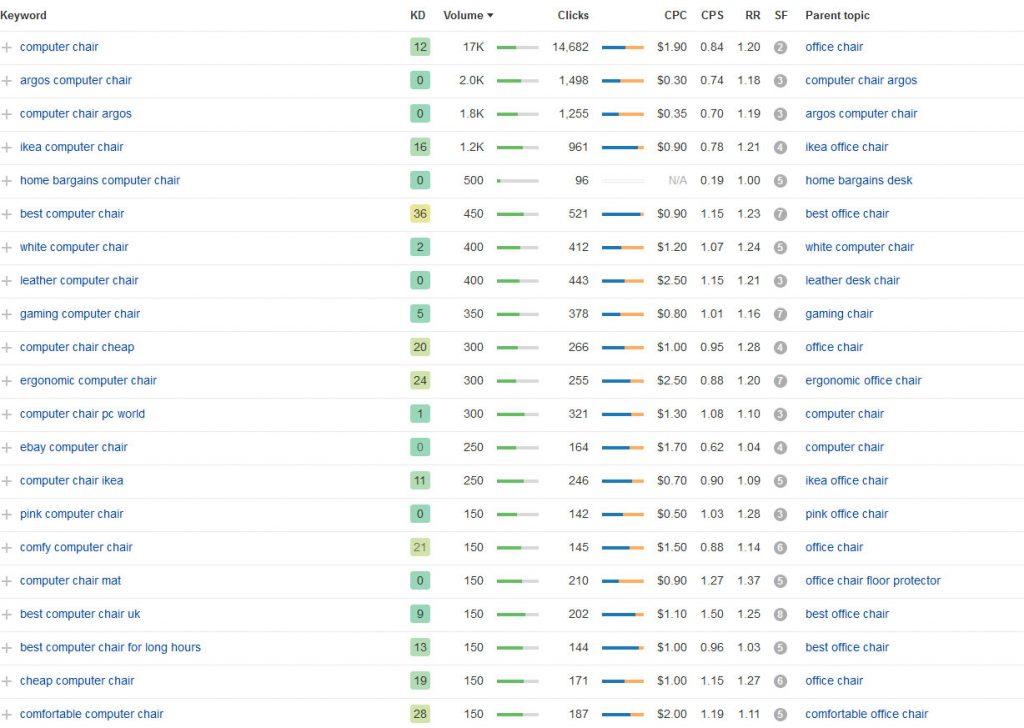
Looking through ahref’s phrase match results for “computer chair” we can see that people commonly search for: “best”, “white”, “ leather”, “gaming”, “cheap”, “ergonomic”, “pink”, “comfy” and “for long hours”. This means that the customer wants a chair that will make them look and feel good throughout the entire day, without paying more than they should. We should keep this in mind when crafting our meta description.
Keywords In Meta Description
You should always include your main focus keyword somewhere in the meta description. It doesn’t need to be at the beginning of your description (like it does with the title tag), but it needs to be in there somewhere. This is because Google puts the keyword in bold when it matches the searcher’s query – making your SERP listing stand out more and increasing your overall click through rate.
You should also include keyword variations and modifiers in your meta description too as you’ll have a greater chance of getting the bold text for a wider range of search queries.
Call To Action
Your meta description should also include a clear call to action to tell people exactly what they need to do. Something like “Book a Free Appointment Today”, “Call Us Now For Free Help”, “Order Today”, “Buy Online Now With Free Delivery”, “Find Out How”, or “Speak To Our Friendly Team”. This is again used to increase your listing’s click through rate, (as well as your conversion rate in some instances).
Meta Description Length
The meta description length should be between 90 to 157 characters long, giving us adequate room to include everything mentioned above:
- Benefit of your page
- Main keyword
- Keyword variations
- Keyword modifiers
- Call to action
Good Meta Description Example
Using the above example of computer chair, the following meta description would perform well:
<meta name=”description” content=”Buy Modern Computer Chairs & Office Chairs Online With Free Delivery. Comfy Desk Chairs, Ideal For Long Hours. Lowest Price Guaranteed – Order Now“/>
- We have 3 keyword variations (computer chairs, office chairs & desk chairs), giving us the best chance of having bold text in our meta description for the widest range of search queries.
- We’ve said they’re “modern” – which indicates it’ll meet their style desires and make them look good (plus it’s also a keyword modifier).
- We’ve said they’re “comfy” and “ideal for long hours” – which tells them they’ll be getting a chair that’ll make them feel good throughout the entire day (and are also keyword modifiers).
- We’ve included the words “buy”, “free delivery”, “order” & “online – which are all transactional keywords.
- We have a clear call to action “order now”
- We’ve said “lowest price guaranteed”, which should answer the price objection at this stage.
URL/Permalinks

An often overlooked, critically important factor in your on-page SEO is your page’s URL (known as a permalink in WordPress).
The best way to structure your website’s URL’s is to make them as short as possible, while including your main keyword. Having your target keyword in your URL is a direct ranking factor – so take your keyword, replace the spaces with hyphens (not underscores) and use that as your URL.
For example if you’re targeting “computer chair” with an ecommerce category page, your URL should be “computer-chair”.
URL Readability
Using a short, clean, keyword optimised URL like “computer-chairs” not only aids directly in your organic rankings by making it easier for Google to understand, it also makes it easier for people to understand.
And although Google isn’t showing URL’s in the SERPs anymore, a large amount of people who naturally post links to a web page use “naked links” – which means they use the URL as the anchor text.
Having a clean URL like “https://company.co.uk/computer-chairs” tells people exactly what they can expect when they visit that URL. Whereas “https://company.co.uk/?p=949” does not and would result in a lower click through rate.
URL Hierarchy
If your website has parent and children pages, it is very much recommended that you reflect that in your URL structure. For example, if you created a filtered category page to target “white computer chair”, and you have a parent category page that lists all computer chairs at “https://company.co.uk/computer-chairs” your URL should be “https://company.co.uk/computer-chairs/white”. Notice that I never said “https://company.co.uk/computer-chairs/white-computer-chairs” – as we’ve already got “computer-chairs” in our parent URL. So adding it again can look spammy. And although I haven’t read any reports confirming this, I’ve often found that they don’t do very well when over optimised.
By using a good URL hierarchy you can increase your website’s topical relevancy around a given subject. However, if you’re using a CMS that doesn’t allow you to create properly structured URL’s (commonly an issue on e-commerce platforms), you can still target the keyword using “https://company.co.uk/white-computer-chairs” and get great results.
Canonicalization

A big problem I’ve seen with a lot of Magento websites (and a huge issue on most Joomla websites) is having multiple URL’s display the exact same page. This causes duplicate content issues and is a poor quality signal in Google’s eyes.
The easiest way to solve this problem is to add a canonical tag to the page to tell Google exactly what the correct URL they should be indexing is.
The Canonical Tag Can Cause Issues
On the other hand, I once worked on a project where the canonical tag was being incorrectly set to a completely different page – stopping the page getting any organic traffic at all! So make sure you double check your work when setting canonicals.
H1 Tag

Your H1 tag is one of the biggest SEO factors on your entire page. Google uses it to understand what your page is about, so it’s of the utmost importance that you include your target keyword in the H1 tag.
Make sure you only use one H1 tag per page, as it’s commonly believed that using more than one causes the positive ranking signals you give through your H1 tag to dilute.
You should also include keyword variations in your h1 tag, if you can do it without looking spammy.
Finally, your H1 tag should convey a very similar message to your title tag for congruency. Failing to do so will result in a high bounce rate, which will decrease your Google rankings. This is especially true when it comes to content marketing, as it can make the searcher feel like they have clicked on the wrong page!
A good example of a H1 tag for our example keyword “computer chair” would be:
<h1>Office Computer Chairs</h1>
- It contains our keyword “computer chair”
- It contains a keyword variation, making it more likely to rank for “office chairs”
- It’s congruent with our title tag and meta description
- It tells visitors exactly what they’re looking at
Content
Your web page’s content is super important when it comes to ranking on the first page of Google. But the way you go about it will depend on the type of keyword you are targeting.
As a general best practice, I would recommend putting the keyword your targeting in the first paragraph of text. You should also include other keyword variations and LSI keywords throughout your copy to really make it clear to Google what your page is about.
Keyword Density
Using your keyword multiple times throughout your page helps Google understand the page’s topic, so make sure to include your keyword and number of times on your page.
You really shouldn’t overdo it and use the keyword excessively or unnaturally, as there are over optimisation penalties that will stop you ranking altogether.
You may have heard previously that the best keyword density is between 1 – 2% but the truth is there is no global keyword density to stick to, it all depends on the keyword.
Some keywords will require a super high keyword density, whereas others will require a much lower keyword density.
You can find the best keyword density for your keyword by taking a look at Google’s top results for your desired keyword.
Open the top 4 ranking pages and work out the keyword density of each – the average of these pages is your ideal keyword density.
You can use free tools like SEOquake, or paid tools like PageOptimizer Pro or Cora to help you speed up this process.
Heading Tags
You also want to include various other heading tags (H2’s, H3’s etc.) Throughout your content. This will help make it easier for visitors to read the content – resulting in a greater time on page and lower bounce rate (both great user interaction signals that indicate quality to Google). Plus, Google also uses heading tags to understand your page – so it’s a win win.
Content For Ecommerce Category Pages
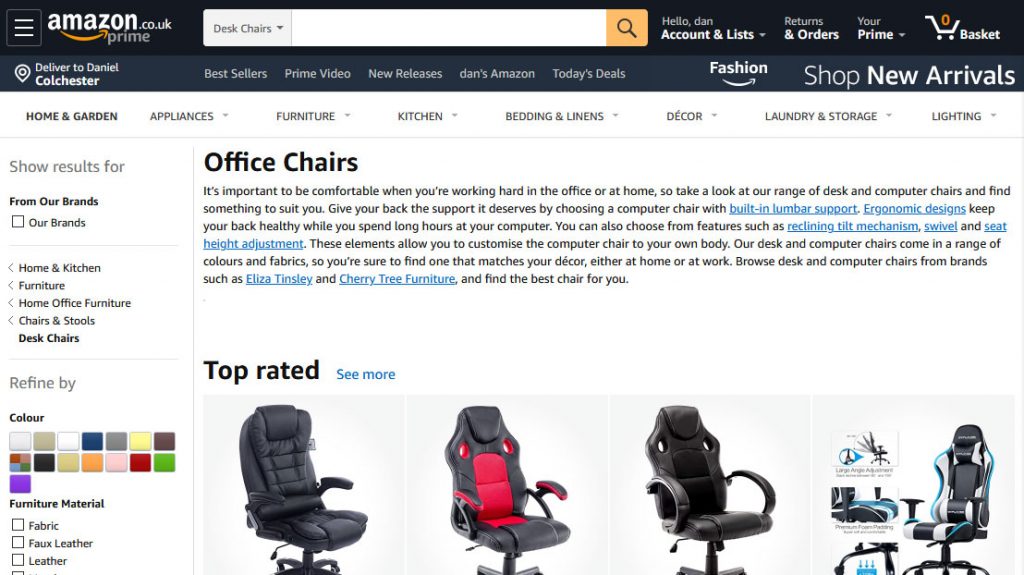
If you’re targeting transactional keywords on an e-commerce category page your goal is to include other keyword variations, modifiers and LSI’s throughout the content, without it coming across as spam or being a huge block of text.
You should also internally link to other category pages (especially filtered category pages that are children of your page) throughout your content to spread authority to deeper pages targeting other transactional keywords.
It’s controversial, but it works. I initially planned on backing this up by showing this screenshot of a category page I built for my client, then I considered showing this screenshot of another category page I built for a client. But then I decided to show what Amazon do on the keyword I’ve used as an example throughout this entire guide (“computer chair”).
With that being said, I wouldn’t personally advise adding category content above the products on category pages as it moves the products below the scroll, which will affect bounce rates. Especially when it doesn’t really add any value to the end user of the page. Instead, place category content below the products and pagination links.
Content For Blog Posts
If you’re targeting an informational keyword with a blog post, your goal is to create the most helpful informative answer to the searcher’s query there is online.
Take a look at the pages that rank for your chosen keyword in Google and make sure you cover everything they do, and then do more.
Think of it like this – Google indexes content. And on most occasions (but not all!) the more high quality, unique, keyword optimised content you have on your page, the more traffic you’ll get from Google.
To find more ideas on how to expand your content, put your seed keyword into ahrefs and click on the questions menu item. This will show you all the most frequently searched questions you could be getting traffic from. You can also use this free tool if you don’t have ahrefs.
Pro tip: Mark up any FAQs you add to your blog post using schema FAQ markup to increase the size of your SERP listing and show the FAQ’s beneath your result.
Images

Images are another important on page SEO factor you need to optimise for Google rankings.
Image File Name
The first step to optimising your images for Google is to choose an appropriate file name. Calling an image “image1.jpg” makes it hard for Google to understand what the image is. You should instead call your image something descriptive and include your keyword in the file name (preferably at the beginning).
For example, if your main keyword is “computer chair” and your image shows an office environment with employees sitting on computer chairs, call your image “computer-chairs-in-office.jpg” – it’s descriptive and has the keyword at the beginning of the file name.
Image Alt Text
The alt text attribute was originally created to allow text to be displayed in place of an image if the user turns off images in their web browser. It also helps visually impaired people using screen reading software understand what the image depicts.
Although alt text is still used for these two reasons and should be taken into account for accessibility – alt text is also helpful for your on page SEO as it helps Google understand your image.
Include alt text on every image featured on your page and make sure you include your keyword inside the alt text. In most instances, make your file name and alt text the same (just replace the spaces with hyphens in the file name). For example “computer chairs in office”.
Image File Size Optimisation
Something both Google and website visitors are hot on is page load time. If your web page takes a long time to load, you can expect a very high bounce rate.
People expect your website to load as soon as they click on your SERP listing, and if it doesn’t – they’ll hit back and find a faster site. This is a huge SEO problem as it indicates to Google that your page isn’t serving the user very well.
The thing that often adds the most amount of page load time is actually the images. So if you can make the image file size smaller you’ll be able to speed up the page load time.
Here are some ways to make your images smaller without compromising on quality:
Image File Extensions
There are 3 main file extensions used on the web. These are jpg, png and gif.
In almost every instance you should be using .jpg as they have a smaller file size. The only two drawbacks are that .jpg’s can’t do animation or transparency. For transparency, use .png. for animation, use .gif.
Image Compression
A good way to drastically optimise your file size is to compress the image. Compression removes much of the unused data stored inside your image file, often resulting in as much as a 45% decrease in file size.
You can run your images through a tool like TinyPNG to compress them for free.
Image Dimensions
Another great tip for image file size optimisation is to ensure the dimensions of your image do not exceed what you actually need.
For example if your image width is 700px, but it’s only ever displayed at a maximum of 500px on your website – you could reduce the physical size of the image by 200px.
Just make sure it doesn’t increase in size on mobile before you go reducing them (as many graphics need to get bigger on mobile for stacking and/or being easy to tap on).
Traffic From Google Image Search
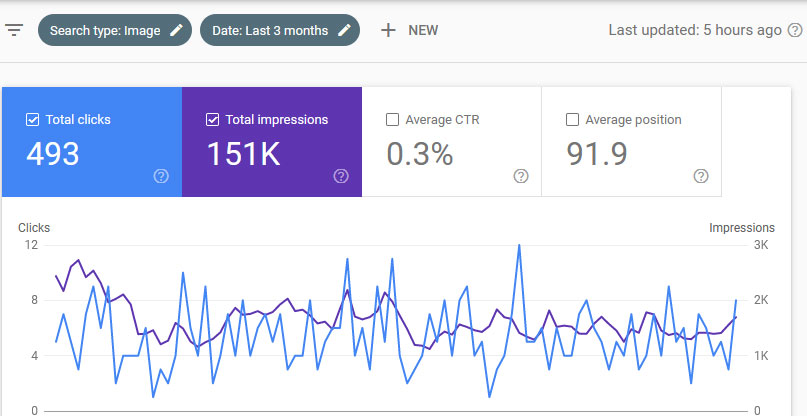
For some Industries, Google Image Search is one of the most underrated traffic sources there is!
If you are optimising for a keyword and you see images in the SERPs – you can conclude that a good amount of people performing that search are wanting to look through images.
Just take a look at my kitchen design client’s Google Search Console report showing how much traffic has come through Google Image Search.
This SEO strategy works great in any industry where people are considering the look of the product as a main influencing factor. Think clothes, furniture, interior design etc. Anytime there is a descriptive keyword like “[Seed keyword] with [Something]” or “Red [Seed keyword]” you can do well with Google Image Search.
Let’s take a look at the keyword “white computer chair”. White computer chair is a descriptive keyword and the buying decision is definitely influenced by its look.
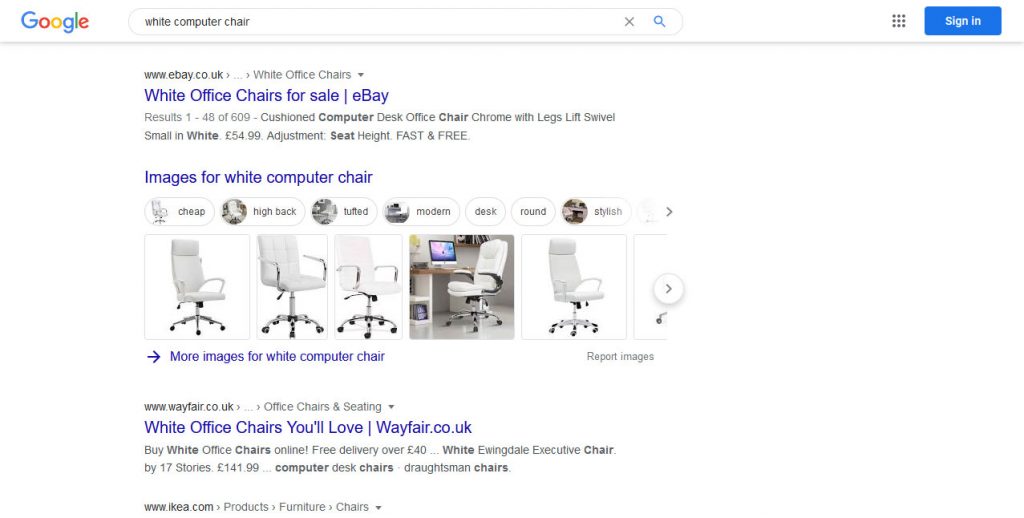
And let’s not forget that a good amount of people must have clicked on the images tab for Google to see pulling images into the SERPs as the right thing to do.
So make sure you are using popular keywords to describe your images if you want to succeed with Google Image Search. Don’t call an image something it’s not, as it won’t meet the searcher’s intent or get clicked on. But definitely do call it what it is, using keywords that gets searched the most.
Use Original Images

Although there are very good arguments for using stock photography for SEO (as Google recognises the image from other websites on the same topic, adding topical relevancy), you are far better off using original images for SEO if you can.
This is because 99% of stock photography looks like stock photography – and your website visitors know that. Stock photography conveys a clear message of “this is who we wish we were”, instead of “this is who we are” and often makes companies’ websites look spammy.
We know this to be true of conversion rate optimisation, but it’s often overlooked in SEO. However the logic works the same – if stock photography causes your bounce rate to increase, you can expect a competitor to overtake you in the SERPs.
With that being said I must point out that not all original images are created equal. If you’re positioning a company as the industry leader and you get sent an image of two guys working out of a shed – go with the stock photography every time.
Links
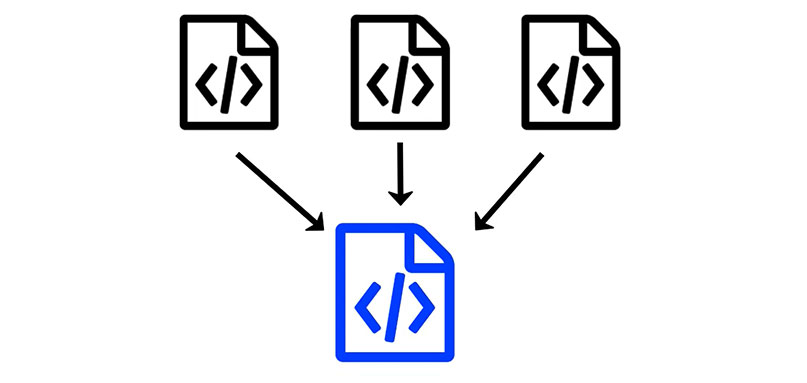
There are two types of link you should include on your page; internal links (links to and from other pages on your website) and external links (links to other websites).
In this section I am going to explain how they can both help your search engine optimisation.
Internal Links
Pages that receive a lot of internal links are interpreted as important by Google. So if you’re trying to rank a page that’s important to your website, you need to link to it from other pages.
Go through your website and find other pages you can link to your target page from, without hindering the user experience.
A great way to do this is to perform a Google search for site:website.com + “[keyword]”.
This brings back all the pages that mention your chosen keyword on your website. Allowing you to now easily go through and internally link to your target page.
For example, search Google for site:ontopmarketing.agency + “ecommerce seo agency” to see every page on this website that mentions the words “ecommerce seo agency”
You’ll notice I’ve internally linked them to my Ecommerce SEO services page as it’s one of the most important pages on my website.
You also want to do this with other keyword variations, such as “ecommerce seo services”, “ecommerce seo company”, “ecommerce seo specialist”, “ecommerce seo expert” etc.
External Links
Linking out to other web pages that are related to your topic helps Google better understand the topic of your page. And so it is beneficial to externally link to other websites that add value to your page.
By externally linking to authoritative web pages, Google can see that your page is likely packed full of valuable, well researched information – helping you rank higher in the SERPs.
Always remember to make the link open in a new tab using the target=”_blank” anchor tag element to prevent losing your website visitors to another website. External links can help your on page SEO, but they’re never worth losing a visitor over!
Did You Learn Something Useful?
Let me know which part of this 2020 on page SEO tutorial you found most interesting in the comments below.
That way I’ll know what you guys want me to make more free tutorials on (and it’ll do wonders for the old ego too!)
Thanks for reading.

